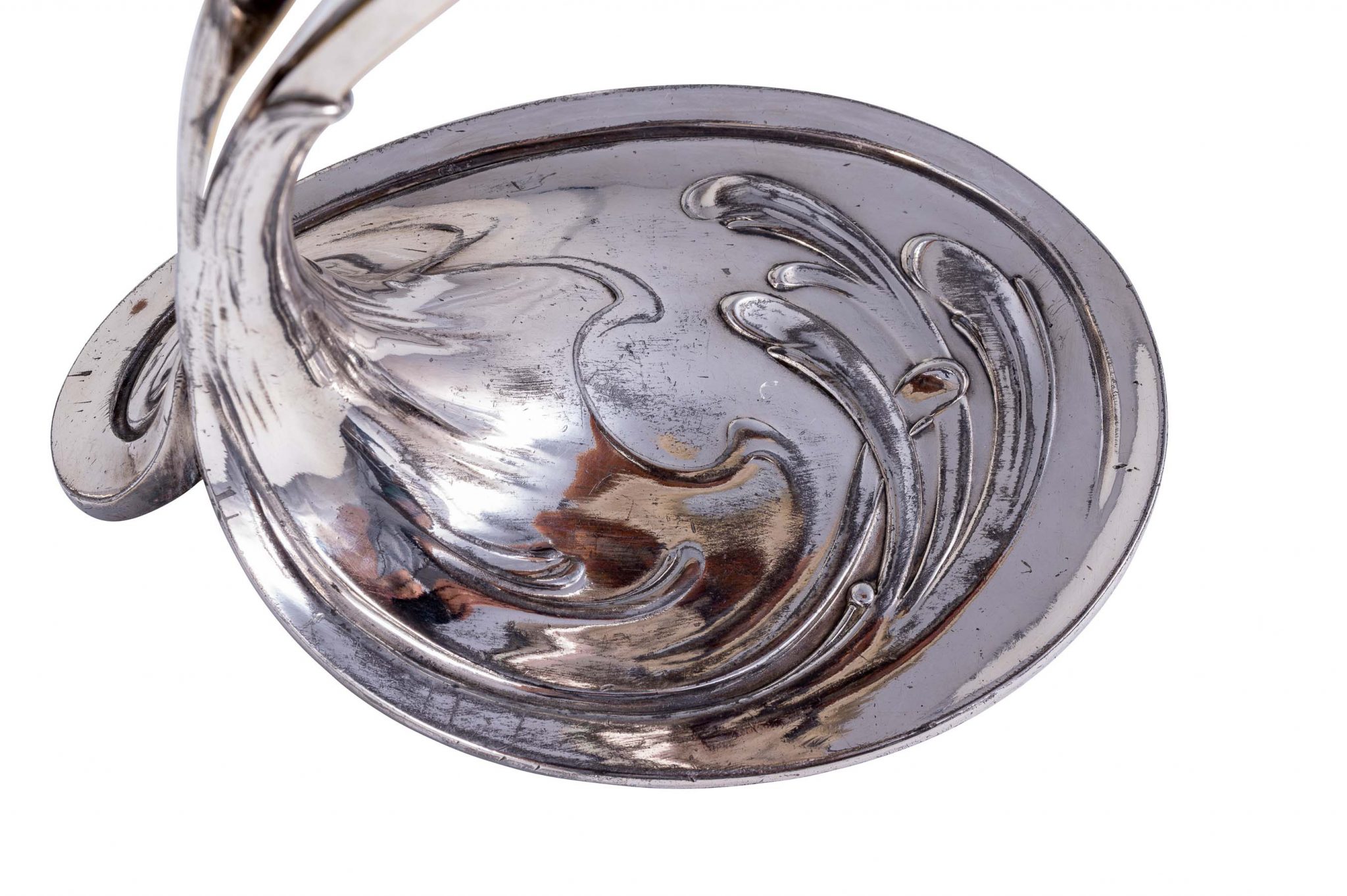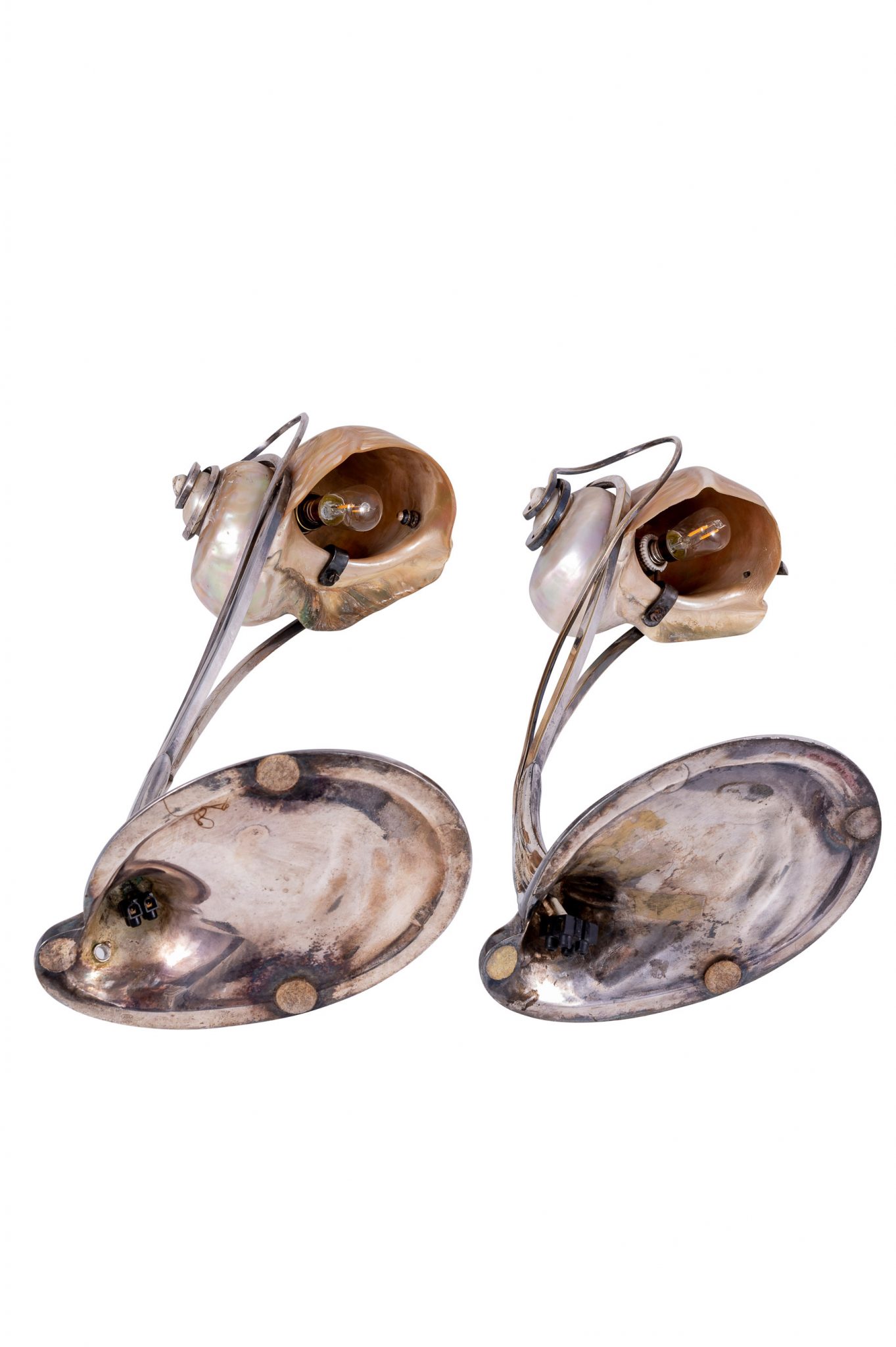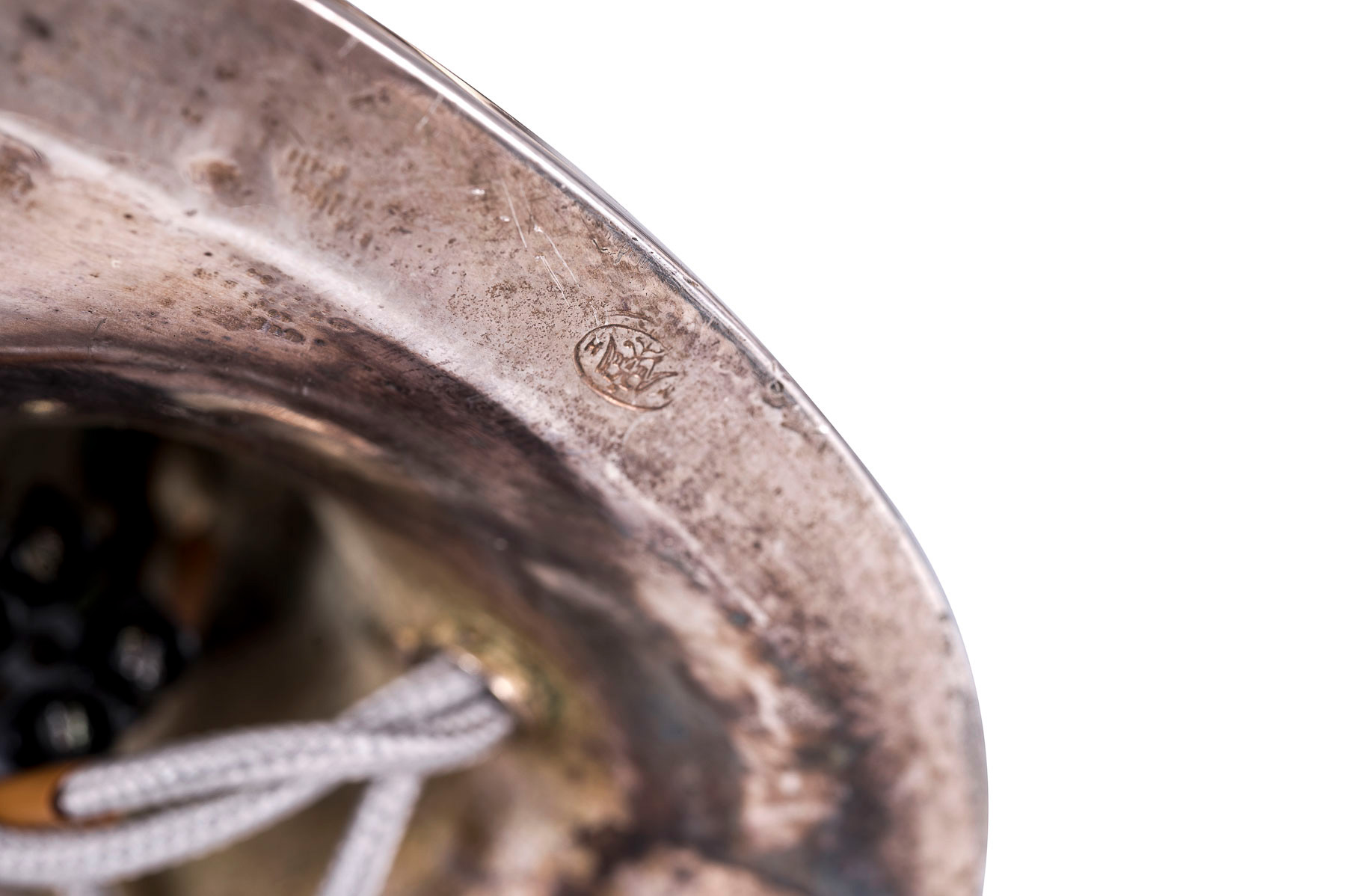Pair of table lamps Nautilus Moritz Hacker ca. 1902
As capital and city of residence of the Austrian monarchy, Vienna was a vibrant center of arts and crafts. In 1882, Moritz Hacker took over an already existing metal processing factory in Vienna, which from 1901 onwards was named “k. & k. Hof-Silber- und Chinasilberwarenfabrik Moritz Hacker”. According to this, Hacker also supplied the Viennese court with his exquisite products.
Admired for their beautiful shape and iridescence, nautilus shells were processed already into baroque Kunstkammer objects. Here, Hacker uses the large shell as a natural shade for a table lamp. In keeping with the nautical motif, he decorates the base of the lamp with waves. In a naturalistic manner and as if moved by water, he lets seaweed rise from it, in which the shell seems to get caught.
With such extravagant accessories for the refined living culture, Hacker met the taste of the time at the turn of the century and was commercially very successful.
both lamps marked with the mark of Moritz Hacker Vienna (see W. Neuwirth) bib.: Waltraud Neuwirth, Blühender Jugendstil (Blooming Art Nouveau) vol. II, self-published Dr. W. Neuwirth, Vienna 1991, p. 251-254 comp. table lamp with Nautilus shell, archive Gustav Gurschner, no. GG-1900045
Out of stock
Description
As capital and city of residence of the Austrian monarchy, Vienna was a vibrant center of arts and crafts. In 1882, Moritz Hacker took over an already existing metal processing factory in Vienna, which from 1901 onwards was named “k. & k. Hof-Silber- und Chinasilberwarenfabrik Moritz Hacker”. According to this, Hacker also supplied the Viennese court with his exquisite products.
Admired for their beautiful shape and iridescence, nautilus shells were processed already into baroque Kunstkammer objects. Here, Hacker uses the large shell as a natural shade for a table lamp. In keeping with the nautical motif, he decorates the base of the lamp with waves. In a naturalistic manner and as if moved by water, he lets seaweed rise from it, in which the shell seems to get caught.
With such extravagant accessories for the refined living culture, Hacker met the taste of the time at the turn of the century and was commercially very successful.
Inquiry
By submitting the inquiry form, you agree to the use of your data for this inquiry. Privacy Policy




















